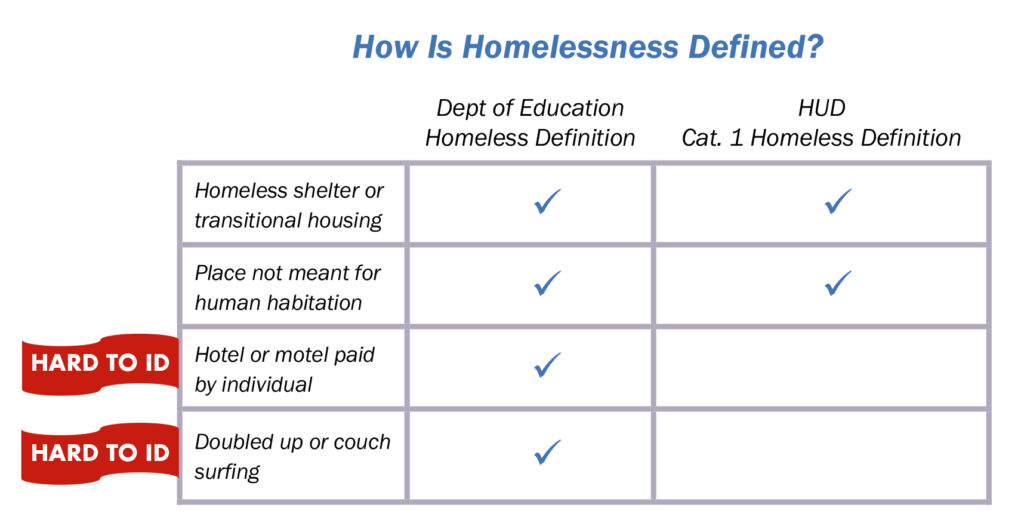In the wake of the COVID-19 pandemic, too many families are having to choose between paying the rent or mortgage and paying for hospital bills, Internet connectivity, and other basic necessities. For students experiencing homelessness, the difficulties presented by their housing status become serious barriers to enrolling in, attending, and succeeding in school. Research has shown that graduating from high school is the number one factor in whether an individual will experience homelessness in the future.
When students are identified by their schools as eligible for homeless assistance services, they are legally entitled to numerous school supports including transportation, credit recovery, and provision of supplies – which could be critical in supporting students to overcome barriers presented by their housing status and providing a road to graduation. Yet research has repeatedly shown that there is likely under-identification of students experiencing homelessness, including recent work from RFA focusing on Pennsylvania, Philadelphia, and Allegheny County. So why is it so difficult for schools to identify all students experiencing homelessness?
Part of the challenge comes from divergent definitions of homelessness at the federal level. The U.S. Department of Housing and Urban Development and its subsidiary programs consider individuals to be category 1 homeless (eligible for most services) only if they are sleeping in a shelter or place not meant for habitation. On the other hand, the U.S. and state Departments of Education, as well as the U.S. Department of Health and Human Services, follow a more broad definition considering children and youth to be homeless if they meet the HUD definition, as well as those staying temporarily in someone else’s residence due to a lack of housing and paying night-by-night to stay in a hotel or motel. Although repeated attempts have been made to align the HUD definition to the DOE and HHS definition, they have not been successful and divergent definitions remain.

Due to the transient and hidden nature of homelessness among those staying temporarily doubled-up or in a hotel, these groups are the hardest to identify. Families in these circumstances often have no social worker checking in and there is no database that might be used to cross-match with student records. And because of the different homeless definitions, families are often unaware that they may be eligible to receive additional school supports. These difficulties compound with the fact that families and youth may not want to self-identify as living in any homeless setting, for fear of stigmatization or penalization.
In the U.S. overall, over three-fourths of students identified as homeless were living in doubled up settings – and research shows that these students face mental health challenges, hunger, depression, and educational challenges far beyond the experiences of their housed peers, even those who are low income. Doubled-up living situations are often a precursor to additional bouts of homelessness in a shelter or an uninhabitable location, by which time students would have already experienced multiple transitions, extended absences from school, and possibly other traumas associated with living in temporary settings.
When communities resist the broader definition of homelessness, they exclude the majority of students experiencing homelessness, who are deeply in need of educational supports. A common homelessness definition is needed to achieve a common understanding of how to identify, support, and serve those students who are struggling with housing instability to succeed in school, graduate, and break the cycle of homelessness.